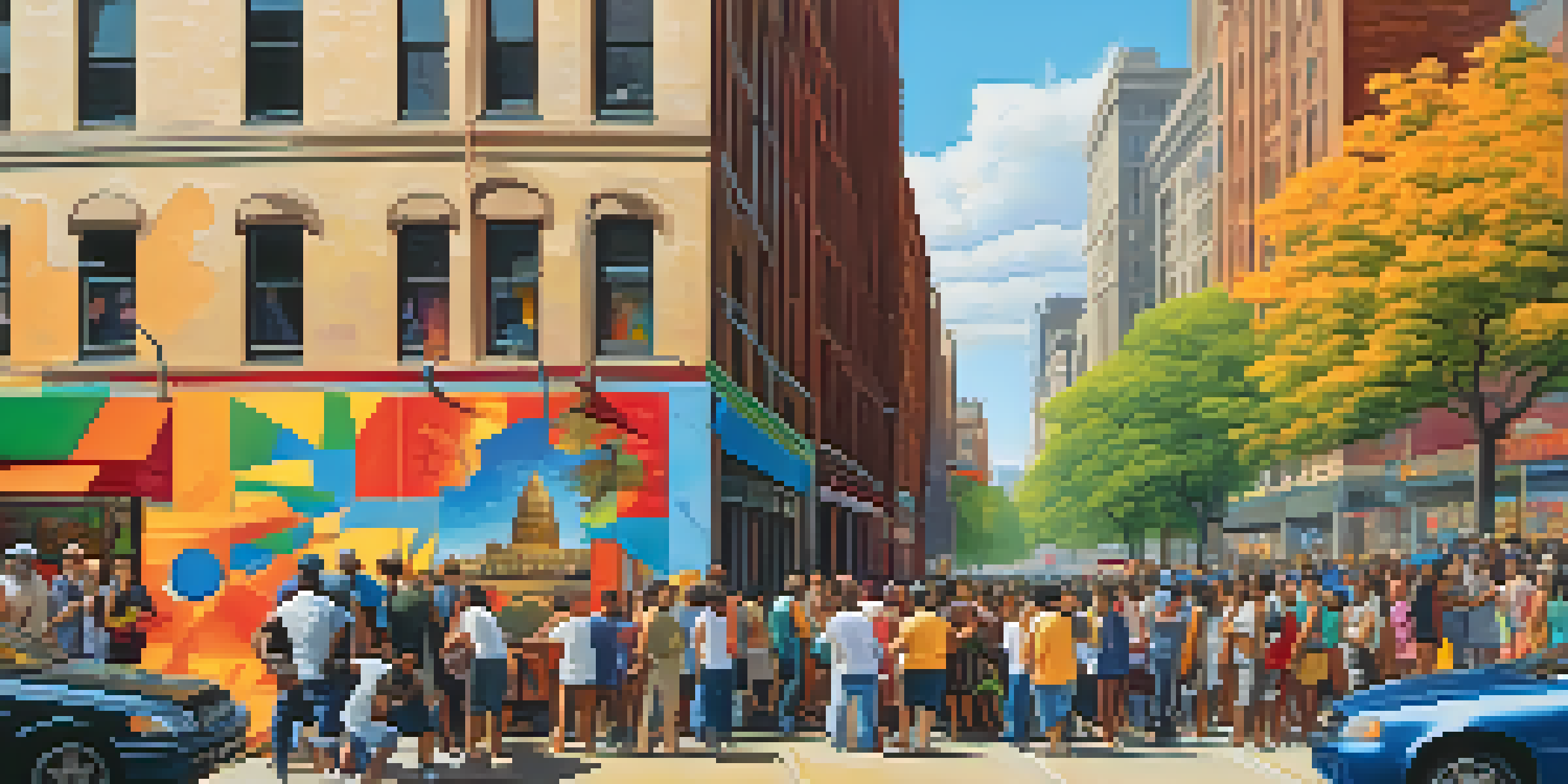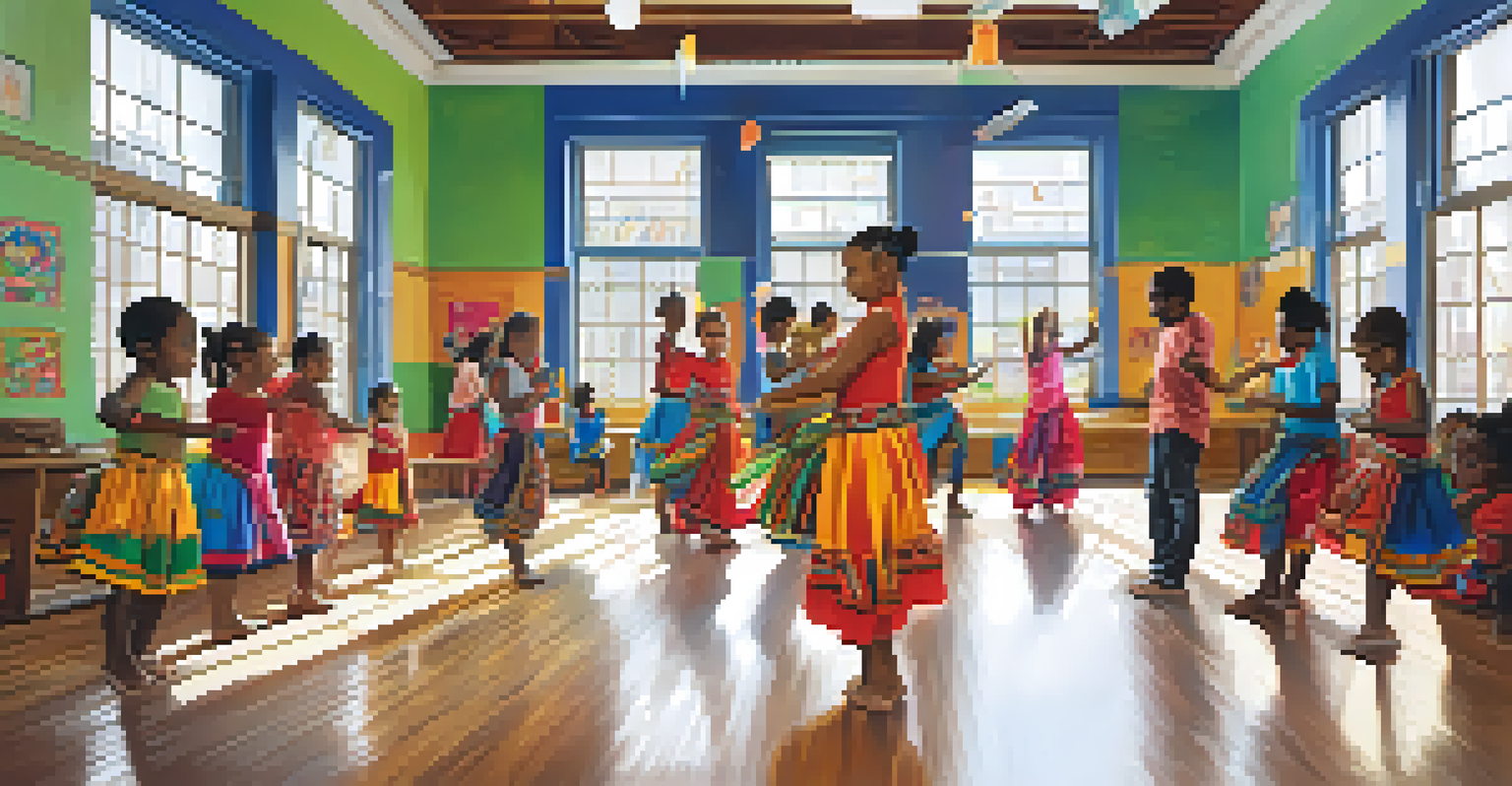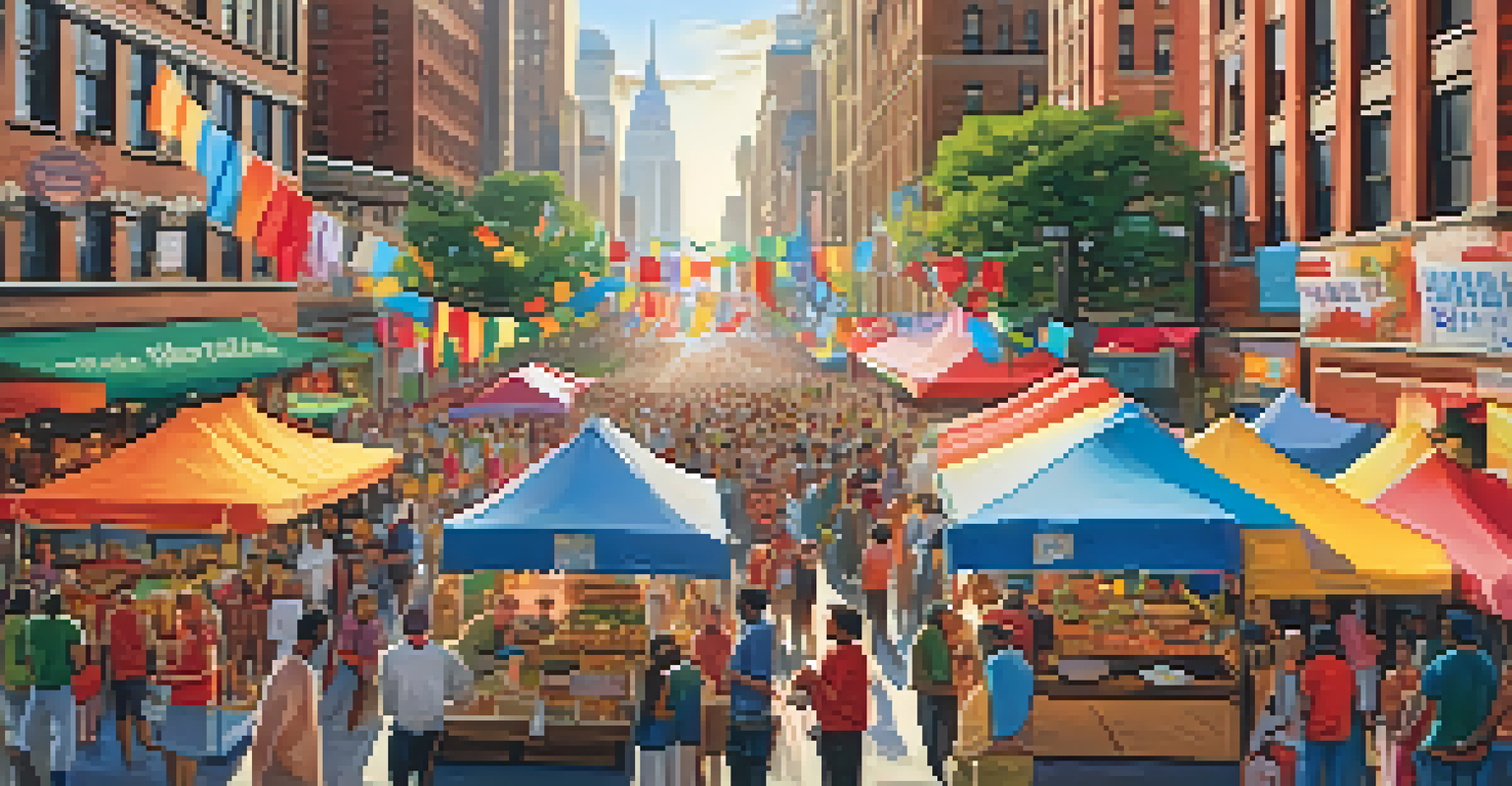Exploring NYC's Role in Global Cultural Exchange Programs

The Heart of Global Culture: Why NYC Matters
New York City is often seen as a melting pot of cultures, making it a focal point for global cultural exchange. With its diverse population, the city serves as a vibrant backdrop for artists, musicians, and thinkers from all corners of the globe. This rich tapestry of cultures not only enhances NYC's local arts scene but also creates a platform for international dialogue and collaboration.
Culture is the sum of all our stories, the essence of who we are as a people.
Cultural exchange programs in NYC, like the International Visitor Leadership Program, bring foreign leaders and artists to the city, allowing them to experience American culture firsthand. Participants engage with local communities, building relationships that transcend borders. These programs promote mutual understanding and foster a spirit of global cooperation.
Moreover, NYC’s institutions, such as museums and cultural centers, play a vital role in showcasing the work of international artists. By hosting exhibitions and performances, they provide a stage for diverse voices, enriching the cultural landscape of the city and the world.
Key Cultural Exchange Programs in NYC
Several prominent programs highlight NYC's commitment to cultural exchange. The Fulbright Program, for instance, enables students and professionals from various countries to study and teach in the U.S., fostering a deeper understanding of American culture. In return, American participants are sent abroad, creating a two-way street of cultural sharing.

Another notable initiative is the Artist-in-Residence programs, which invite international artists to live and work in NYC. These programs often culminate in public exhibitions, allowing local audiences to engage with global art movements. Such interactions spark conversations about cultural identity and artistic expression.
NYC: A Hub for Cultural Exchange
New York City serves as a vibrant melting pot of cultures, facilitating global artistic collaboration and dialogue.
Additionally, organizations like the Asian Cultural Council support artists from Asia to collaborate with their American counterparts. This not only enriches the creative process but also nurtures long-lasting partnerships that benefit both communities.
The Impact of Cultural Exchange on Local Communities
Cultural exchange programs in NYC significantly impact local communities, breathing new life into neighborhoods and promoting inclusivity. When international artists come to NYC, they often engage with residents through workshops, performances, and community projects. This interaction fosters an appreciation for diverse cultures and encourages dialogue among different groups.
Art is not freedom from discipline, but disciplined freedom.
Local schools also benefit from these exchanges, as students gain exposure to global perspectives. Programs that integrate international arts and culture into curricula help cultivate open-mindedness and creativity among young learners. By witnessing and participating in diverse cultural practices, students develop a broader worldview.
Moreover, the economic benefits of cultural exchange are undeniable. Events and festivals celebrating global cultures draw tourists and locals alike, boosting local businesses and creating job opportunities. This economic infusion helps sustain the vibrant arts scene that NYC is famous for.
Challenges Faced by Cultural Exchange Programs
Despite their positive impact, cultural exchange programs in NYC face several challenges. Funding is often a significant hurdle, as many organizations rely on grants and donations to sustain their initiatives. In times of economic uncertainty, these funds can dwindle, putting programs at risk.
Additionally, navigating the complexities of immigration policies can create barriers for artists and participants from abroad. Stringent visa regulations sometimes prevent talented individuals from sharing their work and ideas in NYC, limiting the scope of cultural exchange.
Impact on Local Communities
Cultural exchange programs enrich local neighborhoods, foster inclusivity, and boost economic growth through artistic engagement.
Lastly, there can be a disconnect between local communities and the cultural programs aimed at them. Ensuring that exchange initiatives are relevant and accessible to diverse neighborhoods is crucial for their success. When programs genuinely engage with local populations, they can thrive and foster deeper connections.
The Role of Technology in Cultural Exchange
In today's digital age, technology plays a transformative role in cultural exchange programs. Virtual platforms enable artists and communities to connect across distances, allowing for real-time collaboration and engagement. This shift not only expands the reach of cultural initiatives but also makes them more accessible to those who may not be able to participate in person.
Webinars, online workshops, and digital exhibitions have become commonplace, enabling global participation without the need for travel. For instance, during the pandemic, many NYC cultural institutions adapted by offering virtual tours and performances, ensuring that art remained accessible to everyone, regardless of location.
Furthermore, social media platforms serve as powerful tools for cultural exchange, allowing artists to share their work and connect with audiences worldwide. These platforms can spark conversations around cultural issues and create a sense of community among diverse groups, showcasing the strength of global collaboration.
Success Stories: Cultural Exchange in Action
Numerous success stories illustrate the power of cultural exchange in NYC. The Bronx Museum of the Arts has hosted exhibitions featuring artists from Latin America, fostering connections between local and international creatives. These exhibitions not only showcase talent but also encourage dialogue about shared cultural experiences.
Another inspiring example is the collaboration between NYC-based choreographers and dancers from Africa, resulting in groundbreaking performances that blend traditional and contemporary styles. These projects highlight the beauty of cultural fusion and demonstrate how exchange can lead to innovative artistic expressions.
Challenges and Future Prospects
While facing funding and immigration hurdles, the future of cultural exchange in NYC looks promising with a focus on inclusivity and technological adaptation.
Lastly, the annual NYC International Film Festival celebrates films from around the world, providing a platform for underrepresented voices. This festival not only entertains but also educates audiences about diverse cultures, showcasing the importance of storytelling in fostering understanding and empathy.
Looking Ahead: The Future of Cultural Exchange in NYC
As we look to the future, the potential for cultural exchange in NYC remains bright. With ongoing efforts to adapt to changing circumstances, programs are likely to evolve and incorporate new technologies and methodologies. This adaptability will ensure that cultural exchange continues to thrive in an increasingly interconnected world.
Moreover, there is a growing recognition of the importance of inclusivity in cultural exchange programs. By actively seeking out diverse participants and communities, NYC can strengthen its role as a leader in global cultural dialogue. This commitment to inclusivity will enrich the experiences of all involved and foster a sense of belonging.

Finally, as cultural exchange programs gain more visibility and support, we can expect to see even greater collaboration between NYC and other cities worldwide. These partnerships will not only enhance the cultural fabric of NYC but also promote a shared commitment to creativity, understanding, and cooperation across borders.